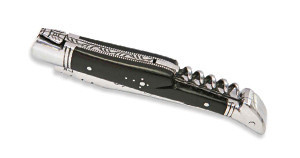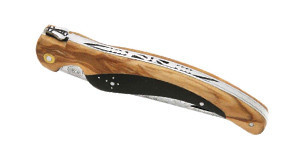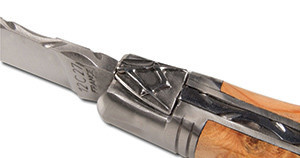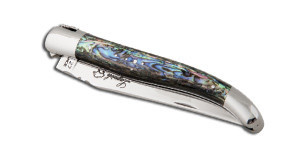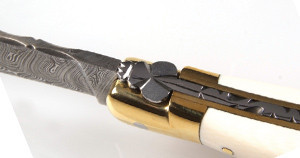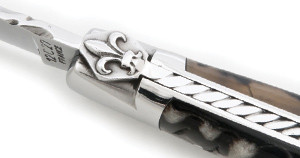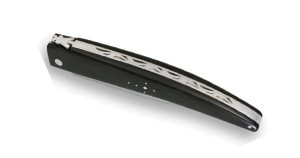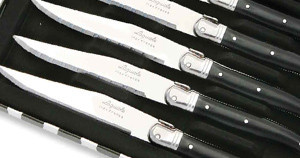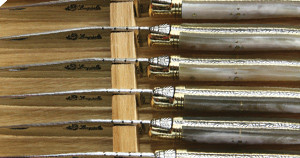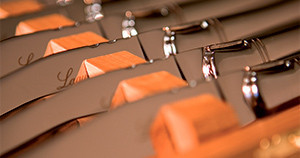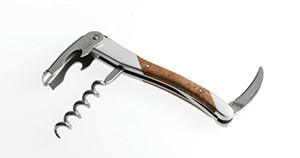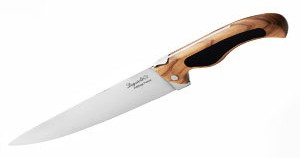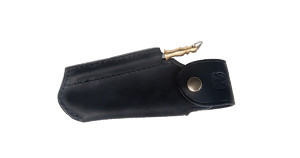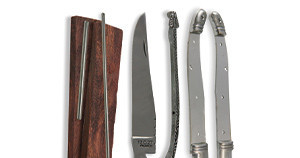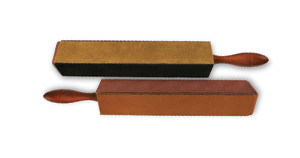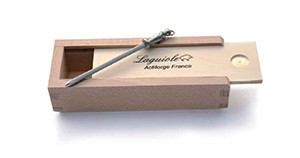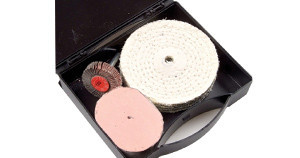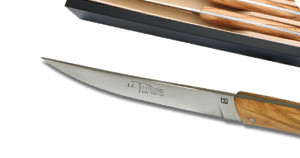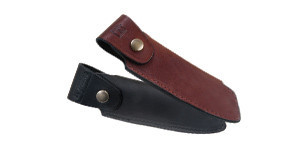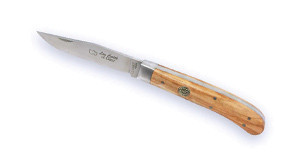Knives and their original uses
• Knives were created in the paleolithic era and have been used ever since. At that time it was worn on a belt, and served as a hunting weapon and for self-defense. In the Middle Ages, table manners have yet to be invented. People used to stick the tip of their knives into their food to carry it to their mouths. At that time, there were no table knives and guest had their own knife which they used to eat, to defend themselves and also to hunt.
• Cardinal Richelieu has been credited with the arrival of rounded knives on our tables. Indeed, weary of his guests’ poor table manners, he asked his maître d’ to file down the tips of their knives, thus effectively eliminating the annoying habit of his guests to pick their teeth in public ! Filing down the blades also increased security at court, by reducing the number of sharp blades surrounding the monarch.
The slow arrival of table cutlery
With the fall of the Roman empire, lying-down meals were relegated to the past and sit-down meals became the norm. Ceramic dishes was progressively being replaced by glass ones, but there are still very few utensils and even fewer cutlery sets , the noble eat with gold knives, while the poor use wooden bowls and spoons.
We have Catherine of Médicis to thank for the introduction of the two pronged fork in the 16th century, in fact, some of those were found in the dowry of this young Italian woman, promised to the future King of France, Henri II. Despite the sophistication and refined manners of this young woman, the fork (which originates from Venice and Florence) would not become commonplace at the King’s table before Louis XIV ! At that time, it was rarely used because the King preferred eating with three fingers which he then wiped on a wet towel.

During the Middle Ages, teaching proper mealtime manners was seen as a proper social challenge. In 1530, Erasmus, a humanist writer, wrote a letter to the young Prince Henry of Burgundy, « On civility in children » . This book is a treaty on etiquette aiming to teach the good manners necessary for life in a civilized society. Beyond advising the young prince, he was also thinking of the poorer kids, thus trying to compensate for the teaching deficiencies of the lower classes. This book on education was then adapted by Jean-Baptiste de la Salle who turned into an etiquette handbook, a proper reading textbook.



